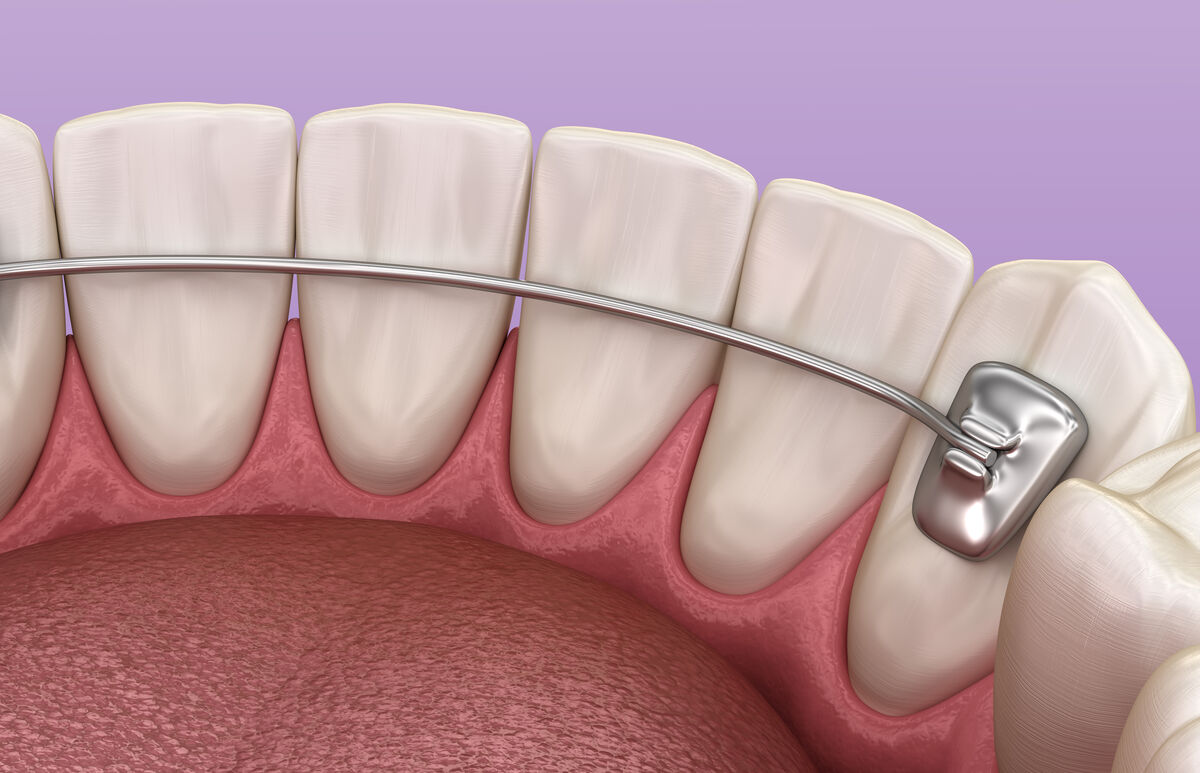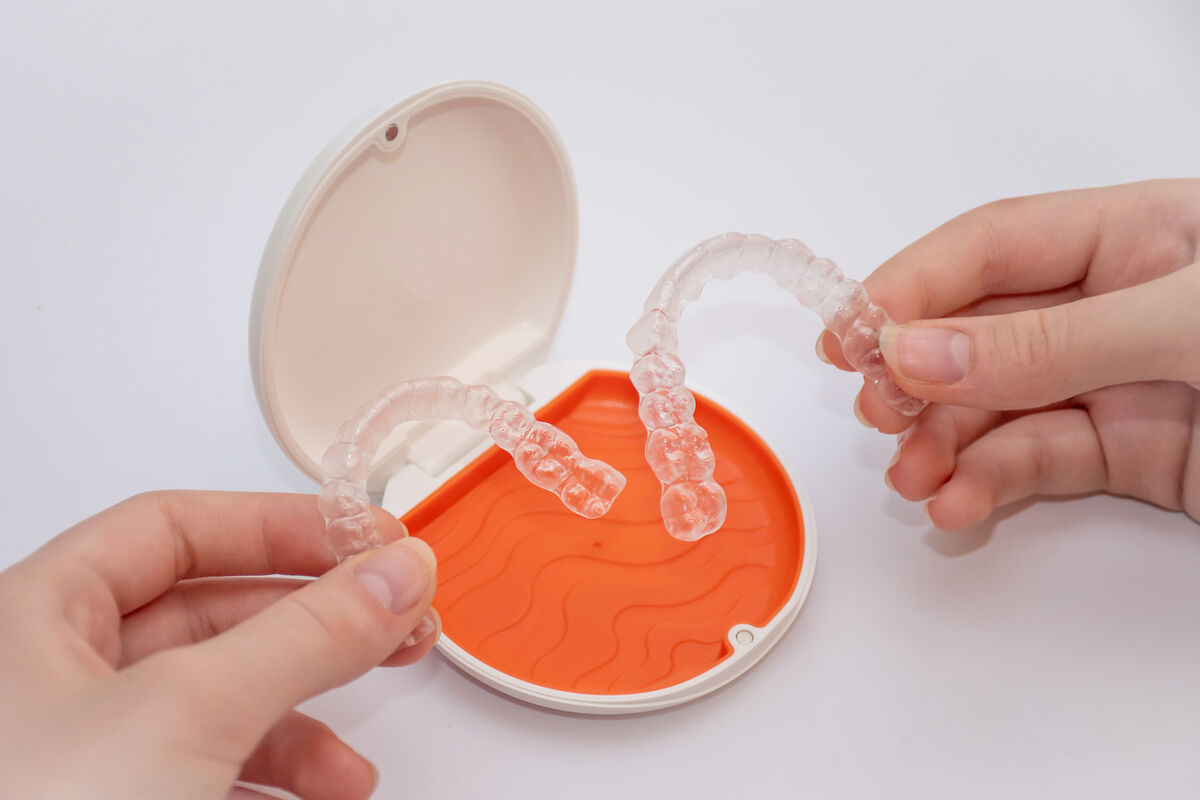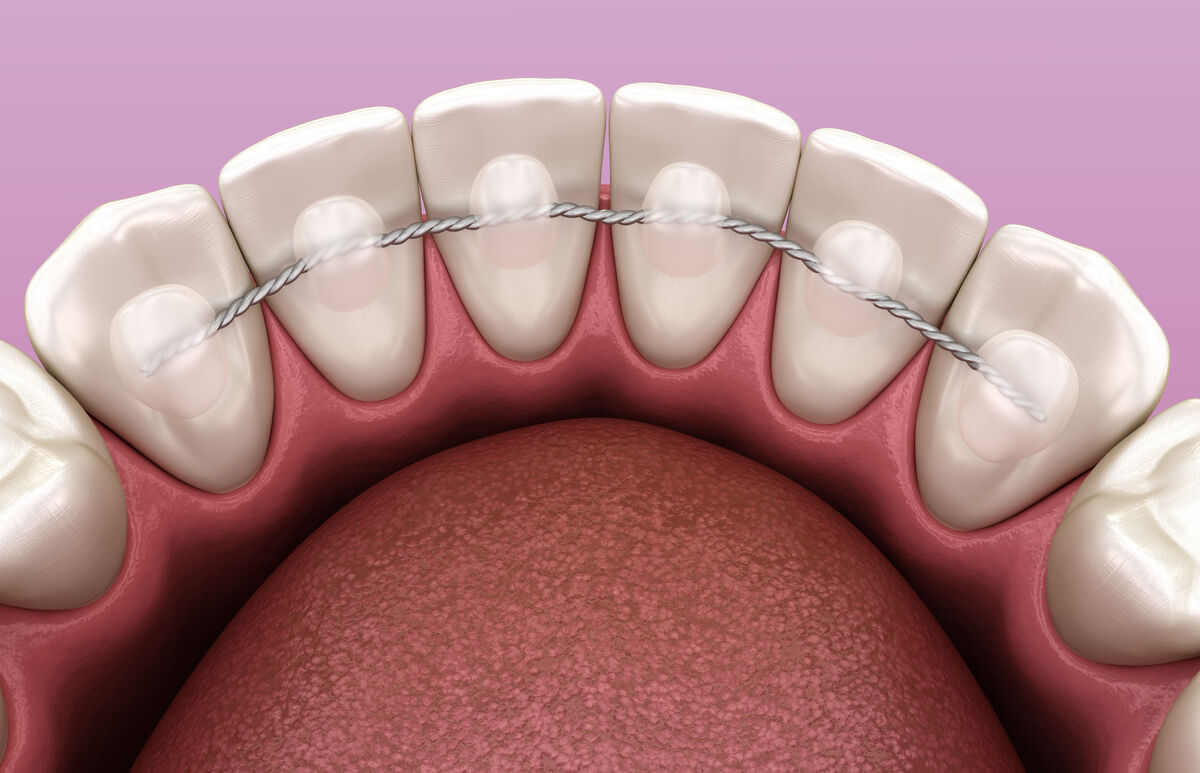Table of Contents

A Complete Guide to Orthodontic Retainers
What Are Orthodontic Retainers?
First, it's important to note that your teeth can move naturally over time. This means that even after orthodontic treatment, your teeth will continue to shift and can move out of their corrected alignment.
If not held in their ideal position, they can relapse toward their original malocclusion or even move into a new, undesirable position. This is known as orthodontic relapse.
This is where orthodontic retainers come in. As the name suggests, their role is to "retain" the alignment achieved through orthodontic treatment. Using various techniques (which we'll discuss later), the goal is to prevent relapse, which is the tendency for teeth to move back to the position they needed to be corrected from.
Relapse can manifest in two ways:
- Anomalies related to the original malocclusion.
- New anomalies not related to the original malocclusion.
Dental crowding and crooked teeth, for example, are common forms of relapse. The more significant the initial issue that needed correction, the higher the risk of relapse. Therefore, retention is essential to maintain the results of your orthodontic treatment.
Achieving a Stable Result: A Job That Starts with the Treatment Plan
While retainers are a mandatory step to ensure long-lasting results, achieving a stable outcome begins with the initial treatment plan itself. Just as you can't build a beautiful, functional house without an architect's blueprint, creating a healthy and attractive smile depends on the treatment plan developed by the orthodontist in partnership with the patient.
This involves taking the necessary steps to achieve the desired result while minimizing and preventing potential relapse as much as possible. For instance, an underlying jaw misalignment could cause the teeth to constantly shift back to a poor position.
In some cases, corrective jaw surgery can create a more favorable environment for straightening the teeth. After the orthodontic treatment is complete, the risk of relapse would be significantly lower.
Conversely, in other situations, overly aggressive changes (like moving molars significantly) could encourage teeth to shift on their own, which is undesirable. Finding the right balance is key to ensuring the retention phase goes as smoothly as possible.
The Retention Phase: A Key Step in Orthodontic Treatment
The retention phase is a crucial step in orthodontic treatment because it makes the results last. The more effective the treatment plan, the more favorable the conditions for retention. This leads to a durable outcome, meaning the teeth are held in position without orthodontic relapse, which is never desirable for either the patient or the orthodontist.
However, the retention phase is not an "active" phase in the traditional sense, where teeth are being moved into position. It is a passive phase (but no less important) that maintains the results. There will be no more movement; the final stage has been reached!
But this stage is also active in the sense that without it, any regression would be possible. Preventing the hard-earned results of orthodontic treatment from deteriorating is an action in itself.

After Treatment: Retainers Hold Teeth in Their Final Position
This final phase of orthodontic treatment, retention, serves to keep the teeth aligned in their final positions. By holding the teeth in this new arrangement, the bone tissue surrounding the tooth roots can remodel and solidify, fixing the teeth in their new home.
Every orthodontic treatment must conclude with this retention phase, which is managed directly by the orthodontic office that handled the patient's treatment.
Whether you had braces, aligners, or any other appliance, there are two main types of techniques used to finalize the treatment:
- The permanent (or fixed) retainer
- Removable retainers.
We will now present them in detail to better understand how each of these techniques works.
Removable Retainers: A Backup If Your Permanent Retainer Breaks
It's important to note that one technique does not necessarily replace the other. If the patient and their orthodontist choose to place a permanent retainer, it does not rule out the use of removable retainers, and vice versa.
In fact, in most cases, removable retainers can be a supplementary (and backup) solution to the permanent wire, which, for various reasons, can break.
Thus, the two techniques can be combined to cover any unforeseen risks and to keep the teeth in the correct position until your next appointment with your orthodontist. An extra layer of security is never a bad thing and will ensure your teeth are never left unsupported.
The Permanent Retainer
What Is a Permanent Retainer?
The permanent retainer, also known as a fixed or bonded retainer, is one of the most common tools for orthodontic retention. It consists of a solid or braided metal wire bonded to the lingual side (the inside) of the front teeth to keep them aligned after active orthodontic treatment.
Some soreness and minor discomfort may be felt for the first few days after placement, but this will quickly fade as you get used to it. It's important to note that this wire is specially designed to allow for normal tooth brushing, although it may require extra attention and tools like a floss threader.
Its quality can vary among orthodontists, so it's important to choose your orthodontic practice carefully from the start. Additionally, the better your oral hygiene, the longer the wire is likely to last, which will help avoid extra appointments with your orthodontist.

Will I Have to Wear My Permanent Retainer for Life?
Initially, an orthodontist will place a permanent retainer for an indefinite period (1 year, 2 years, 5 years...). Afterward, depending on the case, either the orthodontist or your general dentist will be responsible for checking that the tooth position remains stable and that the appliance is in good condition and continues to function correctly.
In the United States, the consensus promoted by the American Association of Orthodontists is that "lifelong retention" is the standard. Since teeth have a natural tendency to shift throughout life, it is recommended to keep the permanent retainer indefinitely to ensure the alignment lasts as long as possible. However, this is not mandatory, and in some cases, a patient may, under the careful supervision of their orthodontist, decide to have it removed.
What Should I Do If My Permanent Retainer Breaks?
For various reasons, a permanent retainer can sometimes break or become unbonded from a tooth. This isn't a major problem if caught quickly, as the retainer is there to maintain work that has already been completed. However, the situation should not be prolonged, as it could lead to changes in your teeth's alignment and a return of previous issues.
You need to address it quickly by making an appointment with your orthodontist or general dentist to have the wire repaired or replaced. If handled promptly, this situation should have no negative consequences on your treatment. If you also have removable retainers, this is the perfect time to wear them full-time to prevent any tooth movement, as we will see now.
Is the Permanent Retainer Visible?
Before moving on to removable retainers, it's worth noting that the permanent retainer is invisible since it is placed on the inner surface of the teeth. It will not affect your smile!
Removable Retainers
What Is a Removable Retainer?
Removable retainers are an increasingly common technique. But be aware! The ideal protocol is often to have both a permanent wire and a removable retainer. Otherwise, you will likely need to wear your removable retainer every night for the rest of your life, and there's always a risk of losing it!
Custom-made from an impression of your teeth at the end of treatment, removable retainers, often called Essix or clear retainers, are designed to maintain the shape of the entire dental arch. Two retainers are usually provided to hold all the upper and lower teeth in their final treatment position (unlike the permanent retainer, which typically only covers the front teeth).
Comfortable, removable, and nearly invisible (like Vivera or Essix), this method combines the strict requirements of the retention phase with ease of use for the patient. Today, this type of retainer is what most orthodontists recommend, often in addition to a permanent retainer.
Will I Have to Wear My Retainers for Life?
The answer here is similar to the one for the permanent retainer. The longer the retainers are worn as prescribed, the lower the risk of relapse. Following an initial period of full-time wear, most orthodontists in the U.S. will recommend nightly wear for life.
If you have a permanent wire, you can periodically check that your removable retainers still fit to ensure no movement is occurring. If you do not have a permanent retainer, you will need to wear them every night for life.
Unlike the permanent retainer, this appliance is removable, so there are risks of loss or damage. It's crucial to contact your orthodontist the same day you lose or break your retainer and to always have a backup set if possible.
Regardless of your wear schedule, you should never eat or drink sugary beverages while wearing your retainers.
What Should I Do If My Retainer Breaks?
If one of your retainers breaks, it's not a catastrophe, but the problem must be resolved as soon as possible. To avoid the risk of your teeth shifting, you should immediately make an appointment with your orthodontist to have new retainers made.
Waiting several weeks without retention could have serious consequences: if your teeth move, you might need to undergo another treatment.
You should continue to wear the other retainer if it is not broken or lost. A permanent retainer, if you have one, plays a crucial role during this waiting period. So, act quickly if one of your retainers breaks to avoid losing all the hard work already done!
Can I Have Only a Removable Retainer or Only a Permanent One?
In practice, it is possible to have only a permanent retainer or only removable retainers. However, as we've just seen, it is often recommended to use a retention protocol that combines both to prevent any risks associated with breakage of either the wire or the retainers.
This dual approach ensures that the teeth are better supported during the retention phase, and the risks of relapse are minimized through this double protection.
Vivera Invisalign Retainers
Vivera retainers, offered by Invisalign, are a premium alternative to traditional Essix retainers. These retainers are said to be 30% stronger than other clear aligners. What does this mean exactly? It means they provide more robust support for optimal alignment and are also less prone to cracking and breaking.
They are also easier to clean and ultimately last much longer than aligners. Thus, they combine the technology of custom-fit Invisalign aligners with a precise and comfortable wear experience.

Conclusion: Retention, an Essential Phase of Orthodontic Treatment
The retention phase is essential to finalize your orthodontic treatment under the best conditions and finish with a beautiful, lasting smile!
This phase may feel like it's extending the treatment duration, but this small effort helps maintain a stable smile for the rest of your life. It represents an additional cost (which should be clearly stated in your initial treatment quote), but as you've understood, it's a long-term investment in your health and confidence.
Indeed, nothing is more costly and time-consuming than having to correct a relapse. Retention is therefore an inseparable part of orthodontic treatment.
You can and should ask your orthodontist about their specific protocol for retention and follow-up. It's important to note that retention should be managed by the same orthodontist who performed the treatment, as it is a direct continuation of the active phase.
Since the treatment and retention are linked, your orthodontist must be the one to handle it. If a relapse were to occur, an orthodontist who did not oversee the retention phase could refuse to take responsibility for the new issues. Therefore, retention is not an optional extra step in the treatment; it is its completion and consecration!
